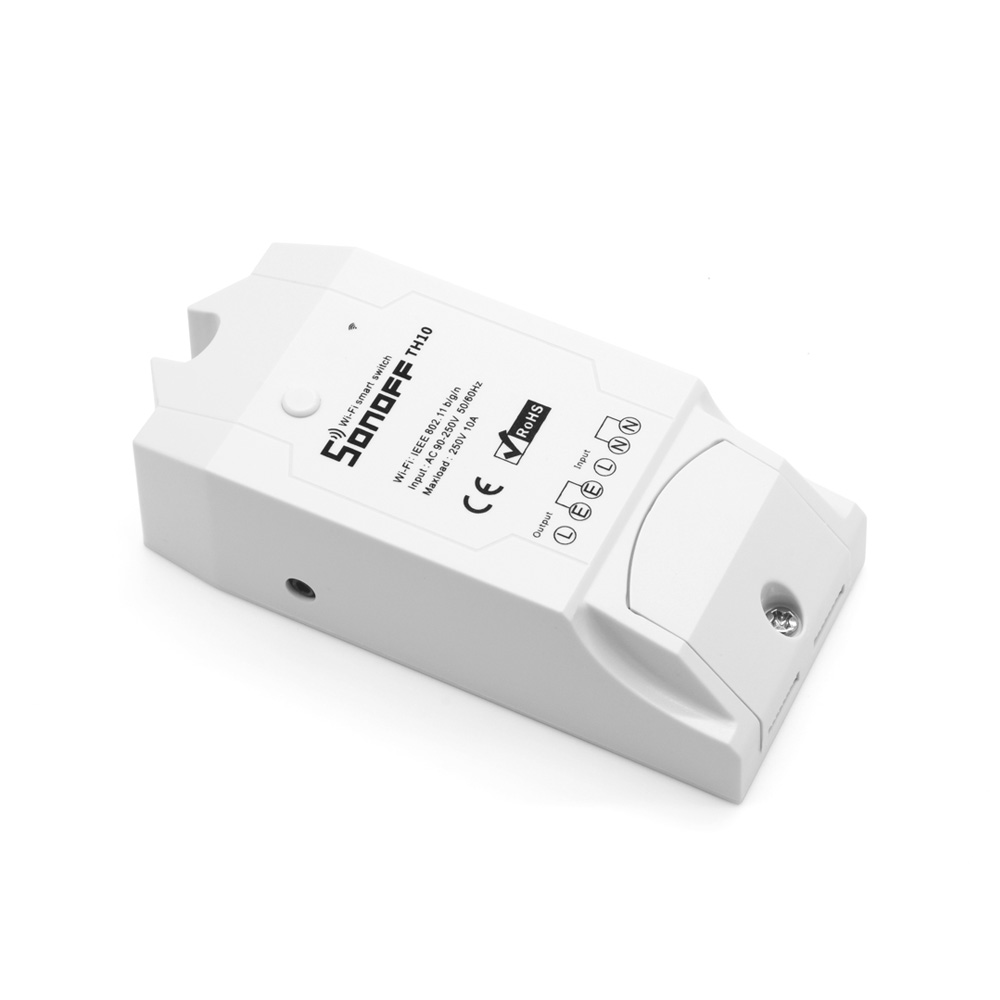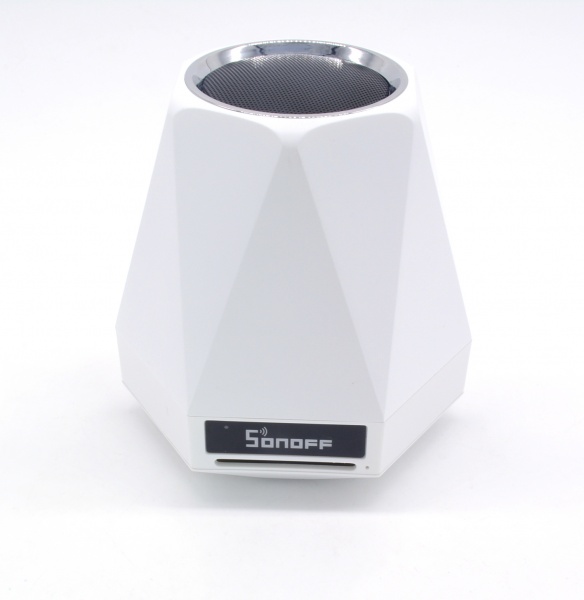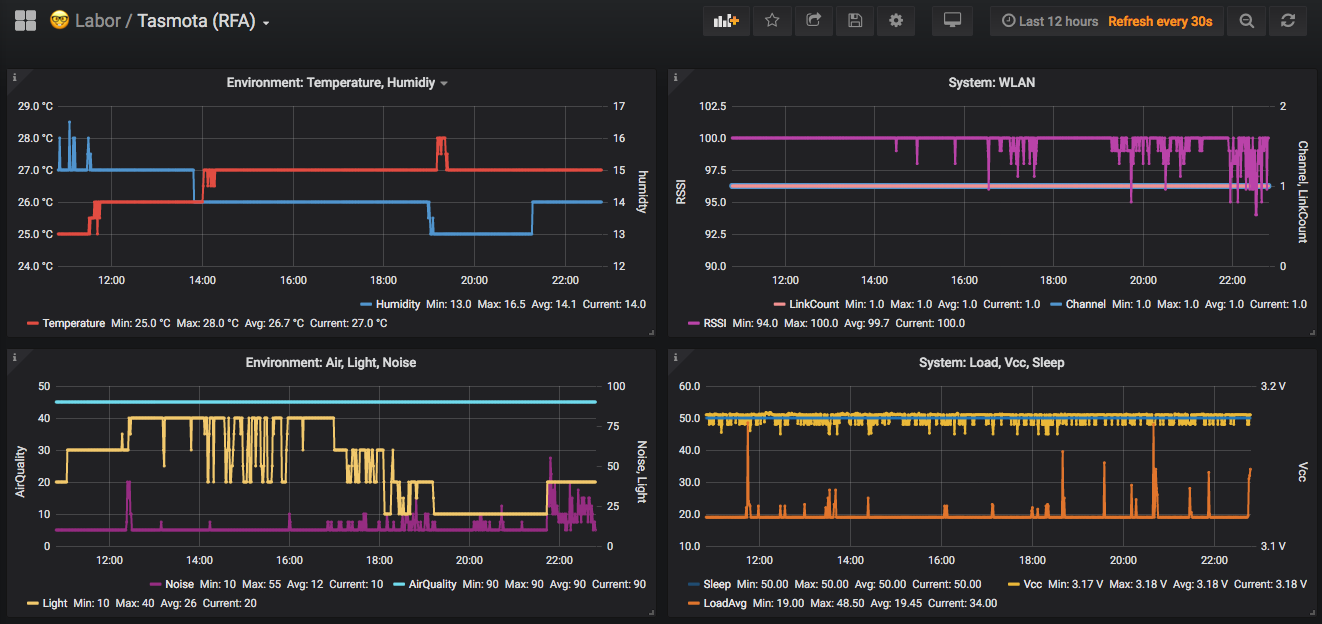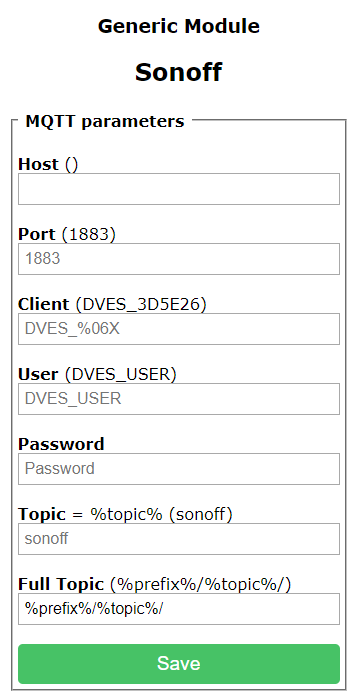Tasmota#
About#
Receive and record telemetry data from devices running the Tasmota firmware using MQTT.
About Tasmota#
Tasmota is an alternative firmware for ESP-based devices like the iTead Sonoff. It features a web UI, rules and timers, OTA updates, custom device templates and sensor support. It can be controlled over MQTT, HTTP, Serial and KNX for integrations with smart home systems.
Tasmota - Open source firmware for ESP devices.#
Total local control with quick setup and updates. Control using MQTT, Web UI, HTTP or serial. Automate using timers, rules or scripts. Integration with home automation solutions. Incredibly expandable and flexible.
See also
Example devices#

Sonoff TH: Temperature and Humidity Monitoring WiFi Smart Switch#

Sonoff SC: Environmental monitoring device#
Sonoff TH#
The Sonoff TH (product page) is an environmental monitoring and controlling device for measuring current temperature and humidity.
Sonoff SC#
The Sonoff SC (product page) is an environmental monitoring device for measuring current temperature, humidity, light intensity, air quality (particulates) and sound levels (noise pollution).
Grafana Dashboard#

Grafana Dashboard for Sonoff SC environmental monitoring device#
Device setup#
By staying as close to the vanilla documentation examples as possible,
newcomers should have an easy way getting their telemetry data ingested.
Kotori will recognize the Tasmota device by its MQTT topic suffix like
SENSOR or STATE and will route telemetry messages through the
appropriate decoding machinery.
Introduction#
See also Configure MQTT for the Tasmota Firmware.

Configure MQTT using WebUI on Tasmota#
Configuration#
This is about getting the system configured properly, so please read this section carefully.
Settings#
While configuring the MQTT broker address is straight-forward, special care should be taken to configure the MQTT topic appropriately to send telemetry data to the data historian.
By example#
Let’s define a communication channel address and a device identifier for data acquisition.
universe/milky-way/earth-onenode-42The appropriate settings for Tasmota would then be
node-42universe/milky-way/earth-one/%topic%/%prefix%/Running this configuration will yield MQTT topics like:
universe/milky-way/earth-one/node-42/tele/SENSOR
universe/milky-way/earth-one/node-42/tele/STATE
Payload examples#
Submit#
Acquire an example HTTP payload message of type SENSOR and publish it to MQTT broker on localhost:
http https://raw.githubusercontent.com/daq-tools/kotori/main/doc/source/integration/tasmota/sensor-payload.json \
| mosquitto_pub -h localhost -t universe/milky-way/earth-one/node-42/tele/SENSOR -s
Acquire an example HTTP payload message of type STATE and publish it to MQTT broker on localhost:
http https://raw.githubusercontent.com/daq-tools/kotori/main/doc/source/integration/tasmota/state-payload.json \
| mosquitto_pub -h localhost -t universe/milky-way/earth-one/node-42/tele/STATE -s
Gallery#
sonoffSC/tele/SENSOR#
{
"Time": "2019-06-02T22:13:07",
"SonoffSC": {
"Temperature": 25,
"Humidity": 15,
"Light": 20,
"Noise": 10,
"AirQuality": 90
},
"TempUnit": "C"
}
{
"Time": "2017-02-16T10:13:52",
"DS18B20": {
"Temperature": 20.6
}
}
sonoffSC/tele/STATE#
{
"Time": "2019-06-02T22:13:07",
"Uptime": "1T18:10:35",
"Vcc": 3.182,
"SleepMode": "Dynamic",
"Sleep": 50,
"LoadAvg": 19,
"Wifi": {
"AP": 1,
"SSId": "{redacted}",
"BSSId": "A0:F3:C1:{redacted}",
"Channel": 1,
"RSSI": 100,
"LinkCount": 1,
"Downtime": "0T00:00:07"
}
}